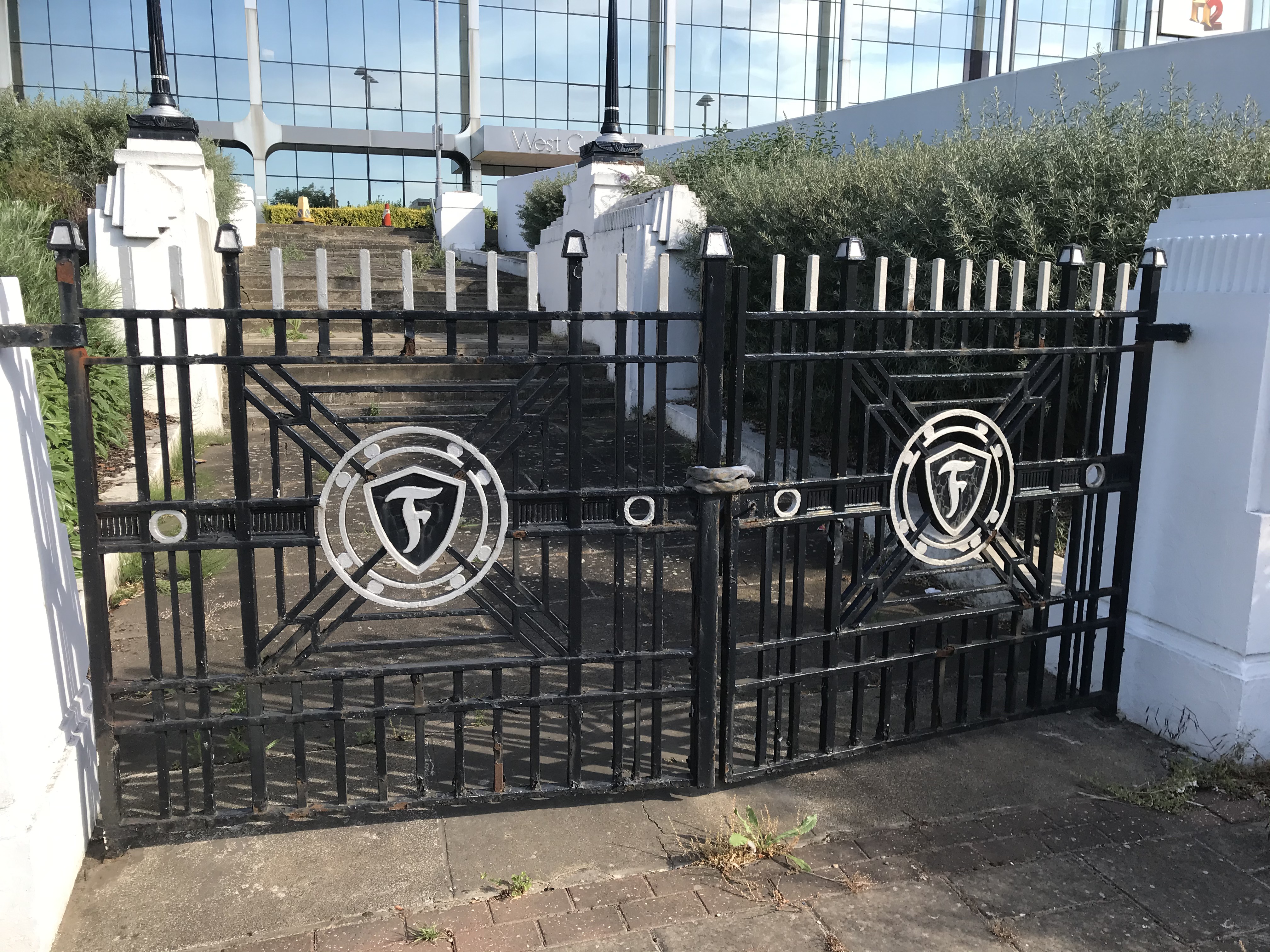
August Bank Holiday 2020 was the fortieth anniversary of what many consider to be the most heinous example of heritage destruction in twentieth century London eclipsing even the loss of Euston Arch nineteen years previously. Over the course of the weekend of 23/24 August 1980, a demolition team came to Brentford, West London and destroyed the Art Deco splendour of the Firestone Tyre Factory. The factory was the “jewel in the crown” of what is known as the Golden Mile and although many of the other Art Deco buildings still survive, Firestone was lost albeit controversially. However, its loss or perhaps it could be called a martyrdom was an important milestone in the future of industrial heritage in London.
Like so much of London’s suburban expansion the Golden Mile developed in the interwar years. It is a stretch of the Great West Road (A4) opened by King George V and Queen Mary in 1925 that cost over £1m to build. Snaking through orchards, fields and market gardens, it quickly became attractive to businesses because of the good communication links, availability of space and ready supply of labour. The road was really built to ease congestion in Brentford High Street but became a centre for industry. Many companies particularly American manufacturers, seeking to get round trade tariffs by building UK plants, established facilities and the work of the legendary Art Deco specialists Wallis, Gilbert and Partners still looms large. These companies also utilised extensive advertising and the building themselves were effectively spectacular advertisements, drawing crowds particularly at Christmas when they all had wonderful displays.
From the Chiswick Roundabout to Syon Lane there are a series of buildings culminating in the factory that gave the junction its name – Gillette Corner. Beyond Syon Lane, land use changes to residential as that land was owned by the Church Commissioners and they refused to allow industrial development on their land. It is not without interest though as the road is lined with former sewer gas destructor lamp posts and also is the location of the “church like” tower of Osterley Station the work of the brilliant Charles Holden and Stanley Heaps who were responsible for so many of the 1930s London Underground suburban extension stations.
Back to the Golden Mile and still surviving is the Barratt Building aka Wallis House which was named after the architect and has now been converted into residential blocks, The building was constructed as specific factory premises for a company called Simmonds Aerocessories who produced components for aircraft from 1931. Although the building changed hands a number of times after the Second World War with owners including British Overseas Aircraft Corporation (BOAC), Midland Bank and Beechams. In front of the building the iron railings still have the emblem of the original owners. On the tower there is a statue of a winged airman designed by Eric Gill.



Also on the same side adjacent to one another are the former Pyrene Fire Extinguisher Factory and Currys, restored by Foster and Partners and now JC Decaux.
A little further along is what was the Coty Cosmetics Factory which now operates as BMI Syon Clinic. As previously stated, the Golden Mile ends with the imposing brickwork of the Gillette Factory which was designed by Sir Bannister Flight Fletcher. Gillette relocated production to Poland in 2006 but the building like all those mentioned has survived and is listed.

Alas, that is not the case for the Firestone Factory. The company had been going through a difficult period in the late 1970s and in early 1980 the factory was closed with the loss of 1500 jobs. The building was sold to the Trafalgar House Company run by Lord Victor Matthews and Nigel Broackes. After a lot of negotiation, contracts were finally exchanged on Friday 22nd August. During the previous week, a Department of the Environment Inspector had visited the factory and had decided to ‘spot-list’ the building – an emergency procedure to protect it from demolition. Unfortunately, no senior Civil Servant could be found to sign the paperwork before the weekend and Trafalgar House arranged for their demolition team to come in on Saturday 23rd August. In a previous life I worked with someone who was one of the bulldozer drivers and he told me that none of the team wanted to destroy such an iconic building. After discussion with management who had been called to the site, they were told that they would all be sacked if they didn’t carry out the demolition.
The demolition shocked local people, who had high regard for the building, and also many heritage groups. The loss of the Firestone Factory was the first serious case for the recently formed Twentieth Century Society. The outrage at its loss galvanised support for their aim of the protection of 20th century buildings and led directly to the listing of 150 inter-war buildings, including Battersea Power Station.
Today, all that is left of the Firestone Building are the pedestrian gates, a couple of lamps and fence posts.

Incredibly in 2004, approval was given for the demolition of the gatehouse to make way for additional parking. The vehicle gates are now on display in the 20th century galleries of the Museum of London. As guides we get a fleeting look at the Golden Mile as we speed out west to Windsor and Bath on the elevated section of the M4 but perhaps to get a taste of how the Firestone Building looked we have to go a few miles north to see the other great work by Wallis, Gilbert and Partners. It’s five miles out of London on the Western Avenue and as Elvis Costello also reminded us I am talking about the splendour of the Hoover Factory – I know that you would like it if you see it too.
All photographs by the author unless otherwise stated. Copyright Steven Szymanski 2021
The Golden Mile is one of the specialist walking tours I am delighted to offer as a guide. Details on request please contact me for more information

